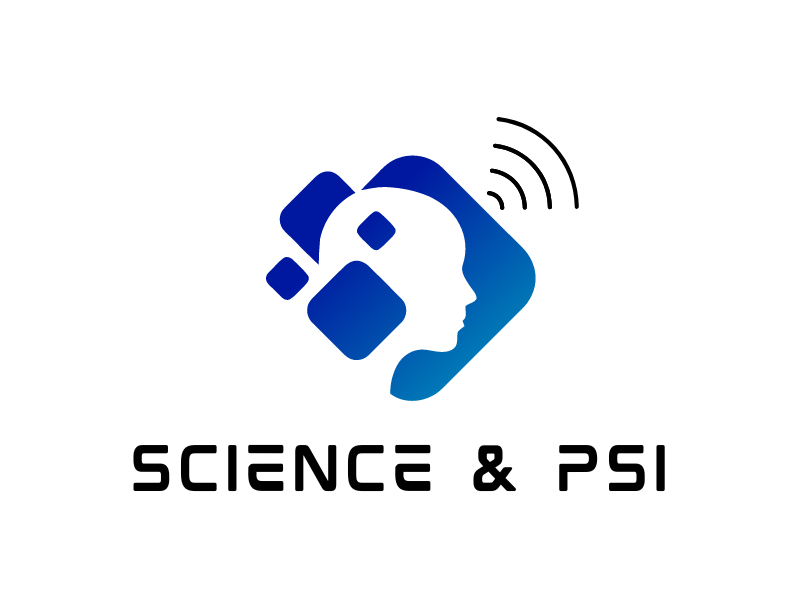Introduction
James Randi was a charismatic and well-known figure in the world of skepticism, renowned for his magical prowess and relentless pursuit of debunking paranormal and pseudoscientific claims. However, beneath the veneer of skepticism lies a contentious debate about the credibility of his approach, particularly concerning the James Randi Million Dollar Challenge. This blog post delves into the enigmatic world of James Randi and the organization he co-founded, the Committee for Skeptical Inquiry (CSI), to scrutinize their methods and impact.
Credibility of the Organization
Randi held no formal scientific degree, yet he was the president of the James Randi Foundation and a co-founder of the Committee for Skeptical Inquiry. The CSI is an organization that has made a name for itself by challenging claims of the paranormal and pseudoscientific nature. While they have received applause for their advocacy of well-established scientific concepts such as climate change, evolution, and vaccines, they have also been accused of using science as a weapon to protect traditional social views in science and influence media.
A troubling aspect arises when the organization ventures into uncharted territories, particularly when it comes to paradigm shifts in science and social issues that challenge conventional wisdom. Critics argue that the CSI has published articles that distort parapsychology research, discredit holistic healthcare, and promote bigotry in opinion pieces, often written by unqualified professionals. These allegations raise concerns about the organization’s impartiality and the credibility of its claims.
One example that adds to the skepticism is the involvement of Michael Shermer, the Editor and Chief of Skeptical Inquire. Shermer was dismissed from Scientific American in 2019 for presenting skewed statistics related to minority women. Subsequently, he ventured into promoting anti-transgender views, which has categorized him as an anti-transgender activist by some. The connection between James Randi and individuals like Shermer raises a red flag for those well-versed in the scientific field.
Frontier science is filled with uncertainties, and criticism is inherent when research challenges existing paradigms or established power structures. To make a well-informed judgment on any scientific matter, it’s imperative to consult professionals who are actively engaged in the respective field. Organizations like the Parapsychological Association, the National Center for Complementary and Integrative Health, the American Psychological Association, and the NAACP are considered credible sources of expertise. Simply holding a Ph.D. in one field, like the History of Science, as in the case of Michael Shermer, does not automatically grant authority to speak on unrelated subjects with credibility.
Yet, people often consume information without hesitation, confirming their existing beliefs and biases, and mirroring their preferences for news channels. This highlights the challenges and biases that can permeate the work of organizations like CSI, particularly when delving into areas that require interdisciplinary expertise and a comprehensive understanding of emerging scientific paradigms.
The James Randi Million Dollar Challenge: Scrutinizing the Contract
As we delve deeper into the examination of James Randi’s approach, we find that the most iconic element of his skepticism is the Million Dollar Challenge. This challenge promised a million-dollar reward to anyone who could provide evidence of any paranormal, supernatural, or occult power under test conditions agreed to by both parties. On the surface, this challenge appeared as a rigorous test of paranormal abilities, a beacon of scientific rigor, and a significant financial prize for those who could prove the existence of the extraordinary.
However, a closer look at the terms of the challenge reveals complexities and ambiguities that raise eyebrows within the scientific community. Randi claimed that
“all tests are designed with the participation and approval of the applicant.” While this might seem fair at first glance, it doesn’t necessarily ensure that the tests are conducted with the scientific rigor that one would expect.
Critics point out that Randi asked for a payout far beyond what would be acceptable in the scientific community. One example from parapsychology is the Ganzfeld telepathy test, which yields a meta-analytic hit rate of 32% with unselected subjects, where the chance expectation is 25%. To achieve a significant effect at p < 0.005 with a 32% hit rate, researchers would need to run an astonishing 989 trials. Each Ganzfeld session takes about 1.5 hours, adding up to around 1,483 total hours. Previous experiments suggest it’s unadvisable to run more than one session per day. Consequently, running 989 x 2 participants, an experimenter who would spend over four years running these sessions day in and day out, and spending an amount that far exceeds $1 million.
Even if a parapsychologist managed to obtain the results Randi demanded—1 out of a million—there’s a catch in the contract. It’s structured in a way that Randi retains the authority to claim that the data still doesn’t confirm psi phenomena. Data interpretation in science is naturally subject to bias, and in the absence of confirmed hypotheses on how psi is possible, parapsychologists are faced with numerous anomalies that exceed statistical chance but are uncertain about how to interpret them.
So, even when results meet Randi’s stringent criteria, the contract allows him to refuse the payout, raising concerns about fairness and the sincerity of the challenge. Randi’s challenge, intended to be a rigorous scientific test, is structured in a way that some perceive as a moving goalpost that’s virtually impossible to reach.
The Importance of Replication in Science
What Randi may not fully realize is that science doesn’t rely on a single chance; it demands replication. Legitimate researchers in various fields have reached out to the James Randi Foundation with genuine curiosity to understand the specifics of the million-dollar prize regarding psi phenomena. Dr. Dick Beirman, who holds a Ph.D. in Atomic & Molecular Physics, made such an attempt in 1998. Dr. Beirman sought to engage in a dialogue with Randi, striving to work together to ensure a fair and unbiased evaluation. He proposed conducting research on psi phenomena within the framework of Randi’s challenge.
This demonstrates that even within the scientific community, there is interest in exploring the paranormal and psi phenomena. However, the challenge’s structure and criteria raise doubts about whether it genuinely encourages scientific investigation or simply serves as a publicity stunt.
The Value of the Million-Dollar Prize
While many might envision the Million Dollar Challenge as a lucrative opportunity for those who can prove the paranormal’s existence, it’s essential to understand that the prize isn’t in cash. It’s in bonds that are supposedly worth a million dollars. However, it’s worth delving into the nature of these bonds to grasp their actual value.
The challenge involves individuals or organizations giving James Randi a bond as an IOU to participate in the challenge. All these IOUs, when combined, sum up to a million dollars. In essence, the prize money is in the form of bonds, which raises several questions about their actual worth.
Firstly, the nature of these bonds is critical. Bonds represent debt securities typically issued by corporations or governments to raise funds. If a significant portion of these bonds is from corporations on the verge of bankruptcy or corporations that don’t need to pay off the bonds for decades, their practical value comes into question.
For instance, the maturity of a bond is a crucial factor. If Randi were to award the
prize in the form of a bond that doesn’t mature for, let’s say, 40 years, the situation would become legally complex. Legally, the IOUs may total up to a million dollars, but in reality, the bonds could be worthless or not accessible until they mature.
In essence, the form of the prize, which relies on the value of bonds, introduces a layer of uncertainty. The perceived worth of the Million Dollar Challenge prize might not align with its practical accessibility. This raises concerns about the seriousness and credibility of the challenge and whether the bonds awarded as the prize have real-world value.
This aspect further fuels skepticism about the challenge’s structure and the true value of the offered million-dollar prize. With the terms of the challenge seemingly stacked against applicants and the nature of the prize being uncertain, it’s not surprising that the scientific community and those interested in the paranormal question the credibility of the entire endeavor.
Influencing the Perception of Psi Research
James Randi’s career as a magician and a skeptical investigator has left an indelible mark on the public’s perception of psi research. While he might be celebrated for his accomplishments in the realm of magic and illusion, his influence in the domain of skepticism and paranormal investigation has been a double-edged sword.
His Million Dollar Challenge, with its seemingly unattainable criteria and contracts that allow for subjective interpretations, has created a public perception that genuine psi research is flawed or unworthy of scientific attention. Randi’s high-profile debunking efforts, while sometimes revealing frauds, have also cast a shadow on legitimate parapsychological research.
One of the core principles of scientific investigation is the need for an open mind and unbiased scrutiny of evidence. While skepticism is a vital part of the scientific process, it should not be used to close the door on legitimate scientific inquiry. Randi’s approach has been criticized for its propensity to dismiss unexplained phenomena without thorough examination, potentially hindering scientific progress.
Interdisciplinary Collaboration and the Quest for Answers
Frontier science, including parapsychology and related fields, is characterized by its exploration of the unknown. These areas are filled with uncertainties and anomalies that challenge conventional scientific paradigms. In such situations, interdisciplinary collaboration and open-mindedness are crucial for making progress.
Legitimate scientists have attempted to engage with the James Randi Foundation and the CSI to explore psi phenomena, as evidenced by Dr. Dick Beirman’s outreach. Such initiatives are driven by a genuine curiosity to understand the unexplained and to test the boundaries of scientific knowledge. It is essential to recognize that scientific inquiry doesn’t thrive in an environment of skepticism that is outright dismissive but rather one that encourages critical examination and replication.
Conclusion: Nurturing Genuine Scientific Exploration
In conclusion, the legacy of James Randi is a complex one. While he has made valuable contributions to the world of skepticism and critical thinking, his approach to challenging the paranormal and the structure of the Million Dollar Challenge have raised concerns about fairness, credibility, and their potential to impede scientific progress.
It is imperative to approach fringe or frontier science with an open mind and a commitment to the rigorous application of the scientific method. Legitimate researchers in fields like parapsychology should be afforded the opportunity to explore the unknown without unnecessary hurdles or preconceived biases. The future of science, after all, is built upon the exploration of the unexplained and the willingness to embrace new paradigms.
The James Randi Million Dollar Challenge serves as a reminder that skepticism, while valuable, should not obstruct genuine scientific exploration. Instead, it should inspire researchers to collaborate, test hypotheses, and seek answers in areas that challenge the current boundaries of human understanding.
James Randi Challenge A Big So What
Reference









